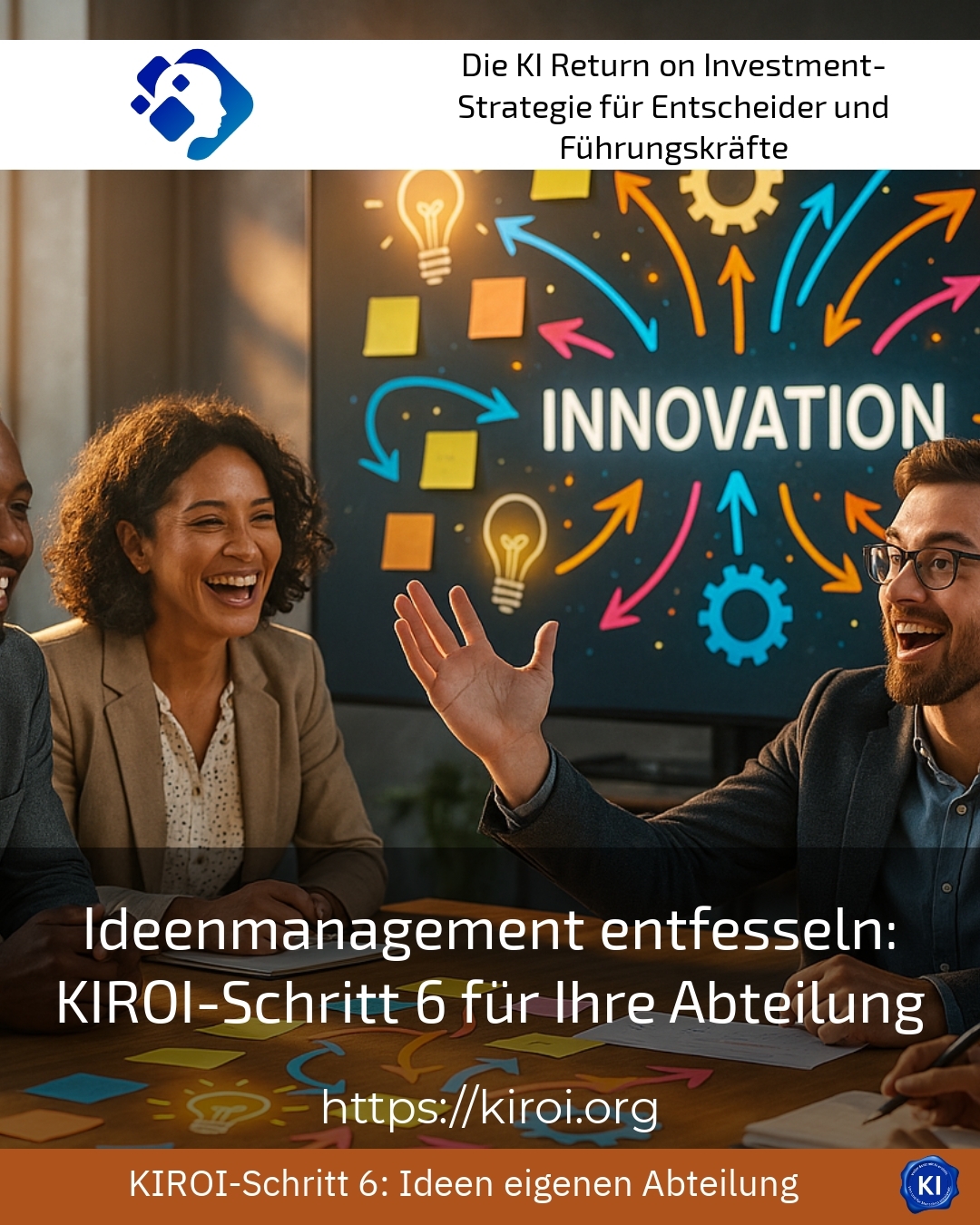In modern organisations, idea management plays a central role in unleashing innovative impulses in a targeted manner. KIROI step 6 in particular offers departments a clear framework for developing concrete, realisable ideas from the creative potential of employees. This process helps teams to scrutinise everyday processes, create new solutions and sustainably increase efficiency. In this blog post, you will learn practical insights into how idea management can be effectively supported and implemented in your department.
Idea management in KIROI step 6: Utilise impulses in a targeted manner
KIROI Step 6 focuses on the targeted promotion of idea development within teams. Particularly in complex departments, such as customer service, production or controlling, innovative suggestions have the greatest impact when they are supported in a structured manner. This not only results in creative approaches, but also practical solutions that make everyday work easier and reduce costs.
An example from the IT department of a medium-sized company shows how the introduction of an automated ticket system minimised repetitive enquiries. This allowed the team to concentrate on strategic projects while at the same time reducing the processing time for enquiries. Similarly, a sales team reported that optimised visit planning through idea management led to reduced travel times and increased customer satisfaction at the same time. In the HR department, on the other hand, intelligent schedules helped to better distribute work peaks, which reduced stress and increased motivation.
These examples show how active support for innovation processes in idea management not only provides new impetus, but also ensures sustainable processes. In a practice-oriented approach to KIROI Step 6, transruptions coaching supports departments in overcoming obstacles and focussing creative energy.
How idea management makes a concrete contribution to departmental optimisation
To fully utilise the power of idea management, a systematic process is crucial. Workshops and moderated sessions create spaces in which employees can contribute their experiences and collect initial ideas together. These are prioritised, evaluated and then transformed into concrete implementation steps.
In the manufacturing industry, such idea sessions have already proven their worth by promoting product improvements. One logistics service provider, for example, reported that process analyses in teams had resulted in new transport routes, which halved journey times and reduced costs. Marketing departments have also used collaborative think tanks to come up with creative campaign concepts that not only attracted new customers but also strengthened the brand in the long term.
BEST PRACTICE with one customer (name hidden due to NDA contract) A manufacturing company used KIROI Step 6 to intensify the dialogue between production and quality management. Targeted idea sessions enabled weak points in the production process to be recognised at an early stage. Implementing the suggestions significantly reduced rejects and measurably improved product quality.
Utilising a variety of methods in idea management
The combination of different innovation methods increases the impact of idea management. Methods such as design thinking promote the development of user-orientated solutions. Agile frameworks enable adaptability and accelerate the implementation of creative approaches. Lean management, on the other hand, helps to make processes leaner and more efficient.
With techniques such as the „Six Thinking Hats“, teams can adopt different perspectives in order to analyse problems comprehensively. For example, the „white hat“ analyses facts, while the „green hat“ specifically generates new ideas. The structured alternation of these ways of thinking removes creative blockages and promotes diverse approaches to solutions.
In practice, companies report how the integration of digital tools boosts collaboration in distributed teams and accelerates the innovation process. The combination of personal support from coaches and methodological diversity also helps to implement ideas efficiently and establish a sustainable culture of innovation.
Idea management as a continuous development process
Idea management is not a one-off measure, but an ongoing process that should be integrated holistically into the everyday life of departments. Open communication, transparent target definitions and motivating framework conditions create a culture in which employees regularly contribute creative suggestions.
Dealing with mistakes also plays a major role here. A fault-tolerant attitude encourages experimentation and shows that mistakes are learnt from. Such an environment increases the willingness to actively participate in the change process, which strengthens the entire team.
In various industries, managers report positive effects from idea management accompanied by coaching approaches. One IT company, for example, was able to establish an interdisciplinary innovation forum in which employees from several departments developed new prototypes together. Agile methods and digital tools significantly reduced the time-to-market for new products.
My analysis
KIROI Step 6 unleashes the power of idea management by providing structured support to teams and unleashing the power of innovation in a targeted manner. This requires a versatile selection of methods and a supportive culture that motivates and involves employees. Practical examples from IT, production and marketing show that targeted impulses can be used to increase efficiency and optimise processes.
Professional support with transruptions coaching offers valuable assistance in breaking down barriers to innovation and sustainably activating creative resources. Idea management thus becomes an integral part of departmental development and helps to meet challenges in an agile manner.
Further links from the text above:
Department optimisation: KIROI step 6 unleashes the power of ideas
Unleash departmental innovation: utilise KIROI step 6 now
Idea management: processes, advantages and practical implementation
For more information and if you have any questions, please contact Contact us or read more blog posts on the topic Artificial intelligence here.















